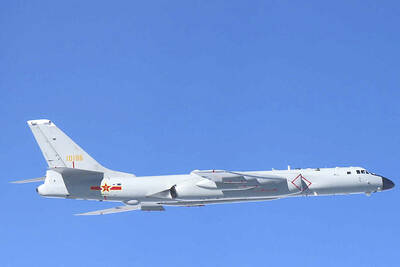India's tangled bureaucracy bungled the first alerts on the tsunami strike losing precious time which could have saved lives, newspapers reported yesterday.
India's air force was warned that a remote base on Car Nicobar island had been flooded well before the giant waves hit the mainland coast hundreds of kilometers away on Sunday morning, the Indian Express said.

PHOTO: AP
"At 7:30 am (0200 GMT) we were informed .... about a massive earthquake near Andamans and Nicobar," air force chief S. Krishnaswamy told the daily. "But communications links went down" with the islands.
"The last message from Car Nicobar base was that the island is sinking and there is water all over."
At 8:15am, the air chief says he asked an assistant to alert the defense ministry.
On the civilian side, totally disconnected from the military, the Indian Meteorological Department had sent a warning fax out at 8:54 am -- but it went to the former science minister Murli Manohar Joshi, and not the incumbent Kapil Sibal. The government changed last May.
Unaware of the mistake, the department then sent another fax to the Home Ministry's disaster control room, at 9:41 am.
At 10:30 (0500 GMT), the control room informed the cabinet secretariat.
Thousands were already dead along India's devastated southeastern coastline.
The Crisis Management Group, India's main emergency response body, finally met at one pm.
The country's top science and technology official told The Times of India that his department learnt of the tsunami strike from the television. V.S. Ramamurthy, secretary at the department, said they had "no clue."
The undersea earthquake hit off Indonesia's Sumatra at 6:29am, sending killer tsunamis racing across the Indian Ocean. Although Indian scientists monitored the quake, because it was outside the country, they just relaxed, the Times said. That had been "the first mistake," Ramamurthy said.
India will now install systems to detect tsunamis at the cost of more than US$27 million, Sibal said Wednesday.
An international expert told the Express that India had turned a deaf ear to repeated warnings it needed a tidal wave alert system similar to that used by many countries because of the costs.
Nearly 11,000 people died in India and thousands are still unaccounted for, particularly on the Andaman and Nicobar islands where communications facilities are poor or non-existent.

PARLIAMENT CHAOS: Police forcibly removed Brazilian Deputy Glauber Braga after he called the legislation part of a ‘coup offensive’ and occupied the speaker’s chair Brazil’s lower house of Congress early yesterday approved a bill that could slash former Brazilian president Jair Bolsonaro’s prison sentence for plotting a coup, after efforts by a lawmaker to disrupt the proceedings sparked chaos in parliament. Bolsonaro has been serving a 27-year term since last month after his conviction for a scheme to stop Brazilian President Luiz Inacio Lula da Silva from taking office after the 2022 election. Lawmakers had been discussing a bill that would significantly reduce sentences for several crimes, including attempting a coup d’etat — opening up the prospect that Bolsonaro, 70, could have his sentence cut to

China yesterday held a low-key memorial ceremony for the 1937 Nanjing Massacre, with Chinese President Xi Jinping (習近平) not attending, despite a diplomatic crisis between Beijing and Tokyo over Taiwan. Beijing has raged at Tokyo since Japanese Prime Minister Sanae Takaichi last month said that a hypothetical Chinese attack on Taiwan could trigger a military response from Japan. China and Japan have long sparred over their painful history. China consistently reminds its people of the 1937 Nanjing Massacre, in which it says Japanese troops killed 300,000 people in what was then its capital. A post-World War II Allied tribunal put the death toll

A passerby could hear the cacophony from miles away in the Argentine capital, the unmistakable sound of 2,397 dogs barking — and breaking the unofficial world record for the largest-ever gathering of golden retrievers. Excitement pulsed through Bosques de Palermo, a sprawling park in Buenos Aires, as golden retriever-owners from all over Argentina transformed the park’s grassy expanse into a sea of bright yellow fur. Dog owners of all ages, their clothes covered in dog hair and stained with slobber, plopped down on picnic blankets with their beloved goldens to take in the surreal sight of so many other, exceptionally similar-looking ones.

‘UNWAVERING ALLIANCE’: The US Department of State said that China’s actions during military drills with Russia were not conducive to regional peace and stability The US on Tuesday criticized China over alleged radar deployments against Japanese military aircraft during a training exercise last week, while Tokyo and Seoul yesterday scrambled jets after Chinese and Russian military aircraft conducted joint patrols near the two countries. The incidents came after Japanese Prime Minister Sanae Takaichi triggered a dispute with Beijing last month with her remarks on how Tokyo might react to a hypothetical Chinese attack on Taiwan. “China’s actions are not conducive to regional peace and stability,” a US Department of State spokesperson said late on Tuesday, referring to the radar incident. “The US-Japan alliance is stronger and more